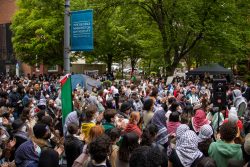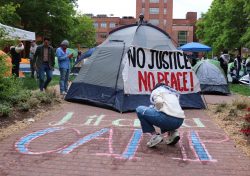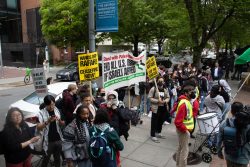The creation of a new senior administrator position to oversee the University’s emergency response plan marks the latest development for the University’s Emergency Response Team. Other changes since the group was formed last September include increased visibility of Department of Public Safety officers and restricted access to on-campus buildings.
A new Vice President for University Safety position was created this summer by University President John J. DeGioia.
The details of this position have not yet been finalized, said Assistant Vice President for Communications Julie Green Bataille. The position is intended to replace Special Assistant to the President for Emergency Preparedness Don Jones, who was hired on a six-month contract beginning this past December, Bataille said. No deadline has been placed on filling the position, she said.
The ERT, which meets weekly to discuss changes and improvements to the University’s emergency plans, is composed of approximately 20 representatives from all three University campuses.
The team is divided into 12 support groups, each with a specific function in the case of an emergency.
The ERT uses the University’s emergency response plan originally created to deal with the Y2K problem as a framework.
“The new plan is enhanced and expanded to be more flexible to deal with many more situations,” Bataille said.
Over the summer, the ERT’s support teams identified the steps that they would each take in an emergency situation. The support teams include departments such as the Department of Communications and Public Affairs, DPS, and the Department of Facilities and Student Housing.
According to a University-wide e-mail sent by Senior Vice President and Chief Administrative Officer Spiros Dimolitsas, DPS has revised its patrols “to provide the greatest presence for overall community safety.” Director of Public Safety William Tucker stressed that DPS officers will be more visible in the community, including an officer stationed at the front gates 24 hours a day.
“We’ve always been visible on the internal side. Now we’re working to become more visible on the external side,” Tucker said.
Part of the ERT’s assessment led it to conclude that access to certain buildings on campus needed to be more restricted. Beginning this semester, access to student residence halls is restricted to residents of the building via the newly-implemented GOCard system.
Access to certain academic and administrative buildings is also now restricted via the GOCard after certain hours. These changes have already taken place on the Main and Law Center campuses and will be implemented in Medical Center buildings later in the year. (lorazepam)
The University’s new plan is modeled after the Federal Emergency Management Agency’s emergency response plan. This change adds an element to the University’s plan by incorporating coordination between the University and FEMA, the D.C. government, the Metropolitan Police Department, the American Red Cross and the D.C. Fire Department.
This summer’s discussions also resulted in the development of the Safety Marshals Program. The program is divided into a Building Marshals program and a Floor Marshals program. The purpose of these programs is to ensure that every residence hall and academic building has a point of contact in case of an emergency, according to Bataille.
The first Building Marshal training session took place last week, with participants consisting mostly of faculty and staff. “The training went very well ? The participants were trained to know the University’s emergency response plan and what their role would be,” Bataille said.
Floor marshals will be identified throughout the coming year, and the program is open to student volunteers.
The ERT will continue to meet weekly during the year. “I think the safety and security of the campus is being taken much more seriously,” Bataille said. “In light of the reality of the events of last September ? we have come to realize that the safety of the campus is a shared responsibility that everyone on the campus needs to take part in. We’ve worked really hard over the summer and we’ll continue to do so.”




